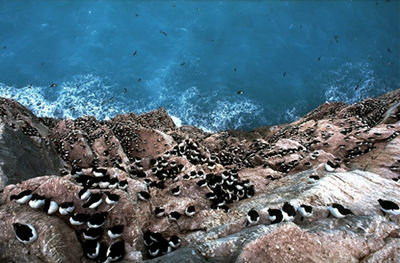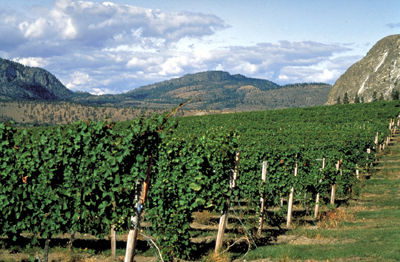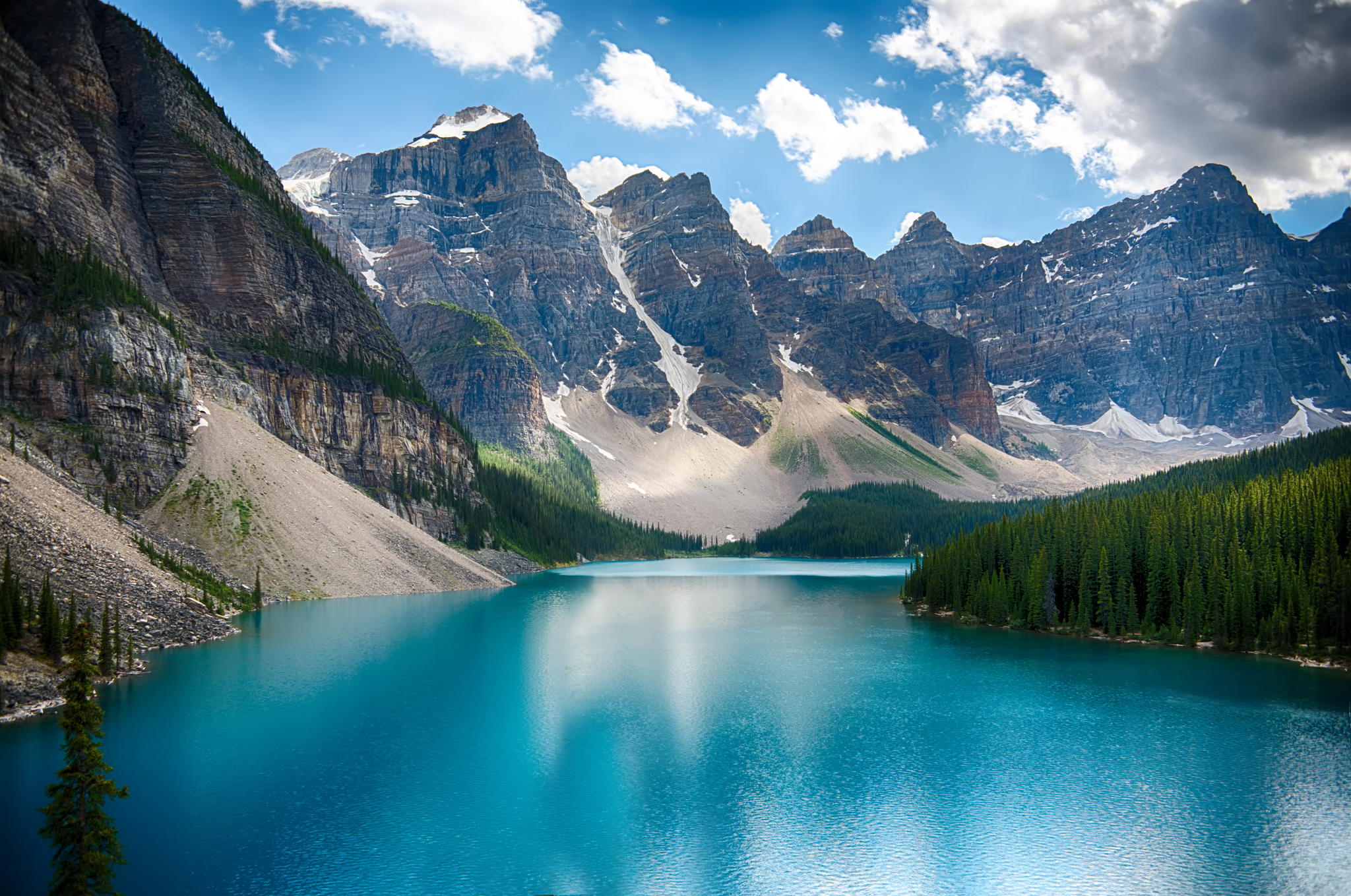Browse "Nature & Geography"
-
Memory Project Archive
Bert A. Sharp (Primary Source)
Bert A. Sharp served in the Royal Canadian Air Force during the Second World War. Read and listen to his testimony below. Please be advised that Memory Project primary sources may deal with personal testimony that reflect the speaker’s recollections and interpretations of events. Individual testimony does not necessarily reflect the views of the Memory Project and Historica Canada.
"https://d2ttikhf7xbzbs.cloudfront.net/The-Memory-Project/image/7115_original.jpg" // resources/views/front/categories/view.blade.php
https://d2ttikhf7xbzbs.cloudfront.net/The-Memory-Project/image/7115_original.jpg
-
Memory Project Archive
Frederick George “Bud” McLean (Primary Source)
"Major Mahoney was awarded the Victoria Cross, my troop officer was awarded the DSO, my troop sergeant was awarded the DCM and my bow gunner was awarded the Military Medal. Someone asked me what I got and I said, “Yes, I got scared.”" See below for Mr. McLean's entire testimony. Please be advised that Memory Project primary sources may deal with personal testimony that reflect the speaker’s recollections and interpretations of events. Individual testimony does not necessarily reflect the views of the Memory Project and Historica Canada.
"https://d2ttikhf7xbzbs.cloudfront.net/MemoryProject/FrederickGeorgeBudMcLean/4181_538.jpg" // resources/views/front/categories/view.blade.php
https://d2ttikhf7xbzbs.cloudfront.net/MemoryProject/FrederickGeorgeBudMcLean/4181_538.jpg
-
Memory Project Archive
Roy Hall (Primary Source)
Roy Hall enlisted in the Royal Canadian Navy in 1948. He served on five other ships before assignment to HMCS Iroquois and overseas service in Korea in 1952. During the Korean War, HMCS Iroquois participated in shore bombardments, dropped off South Korean guerrillas for raids behind enemy lines, and patrolled the waters around the Korean peninsula. On 2 October 1952 HMCS Iroquois was hit by a shell, the only time during the war a Canadian warship was hit by enemy fire.Please be advised that Memory Project primary sources may deal with personal testimony that reflect the speaker’s recollections and interpretations of events. Individual testimony does not necessarily reflect the views of the Memory Project and Historica Canada.
"https://d2ttikhf7xbzbs.cloudfront.net/The-Memory-Project/image/13457_original.jpg" // resources/views/front/categories/view.blade.php
https://d2ttikhf7xbzbs.cloudfront.net/The-Memory-Project/image/13457_original.jpg
-
Article
Murre
The term murre refers to 2 species, common murre (Uria aalge) and thick-billed murre (U. lomvia), the largest extant members of the auk family.
"https://d2ttikhf7xbzbs.cloudfront.net/media/media/17e7b4cc-ada0-4552-8cd2-fc0fab422f8f.jpg" // resources/views/front/categories/view.blade.php
https://d2ttikhf7xbzbs.cloudfront.net/media/media/17e7b4cc-ada0-4552-8cd2-fc0fab422f8f.jpg
-
Article
Muskellunge
Muskellunge (Esox masquinongy), large, predaceous, soft-rayed freshwater fish occurring naturally only in eastern North America.
"https://d2ttikhf7xbzbs.cloudfront.net/media/media/8909e2d0-1e60-45fb-9182-1ed2097d6bcd.jpg" // resources/views/front/categories/view.blade.php
https://d2ttikhf7xbzbs.cloudfront.net/media/media/8909e2d0-1e60-45fb-9182-1ed2097d6bcd.jpg
-
Article
Muskox
Muskox (Ovibos moschatus), shaggy, horned Artiodactyl of the cattle family (Bovidae); occurs naturally only in Canadian arctic tundra (mainland and Arctic Archipelago), Alaska and in Greenland.
"https://d2ttikhf7xbzbs.cloudfront.net/media/media/3a709b78-b386-493f-a455-f16fe201283d.jpg" // resources/views/front/categories/view.blade.php
https://d2ttikhf7xbzbs.cloudfront.net/media/media/3a709b78-b386-493f-a455-f16fe201283d.jpg
-
Article
Muskrat
Muskrat (Ondatra zibethicus), fairly large rodent common throughout much of North America
"https://d2ttikhf7xbzbs.cloudfront.net/media/media/32e05840-f732-477f-a6ac-fb872c43589a.jpg" // resources/views/front/categories/view.blade.php
https://d2ttikhf7xbzbs.cloudfront.net/media/media/32e05840-f732-477f-a6ac-fb872c43589a.jpg
-
Article
Mussel
The mussel is a bivalve (hinged shell) mollusc of either the marine order Mytiloida or the freshwater superfamily Unionacea.
"https://d2ttikhf7xbzbs.cloudfront.net/media/media/7f00d523-6521-4a0d-bc8b-6d4f3971d383.jpg" // resources/views/front/categories/view.blade.php
https://d2ttikhf7xbzbs.cloudfront.net/media/media/7f00d523-6521-4a0d-bc8b-6d4f3971d383.jpg
-
Article
Mycorrhizae
Associations between PLANT roots and FUNGI are mycorrhizae and are thought to occur on roots of 95% of all SEED PLANTS. They are probably essential to the survival in nature of both partners. The plant derives an enhanced ability to absorb essential minerals and greater resistance to root diseases.
"https://development.thecanadianencyclopedia.ca/images/tce_placeholder.jpg?v=e9dca980c9bdb3aa11e832e7ea94f5d9" // resources/views/front/categories/view.blade.php
https://development.thecanadianencyclopedia.ca/images/tce_placeholder.jpg?v=e9dca980c9bdb3aa11e832e7ea94f5d9
-
Article
Narwhal
The narwhal, perhaps best known for its spiralled tusk, is a whale living in Canada’s arctic waters.
"https://d2ttikhf7xbzbs.cloudfront.net/media/Twitter_Cards/narwhal.jpg" // resources/views/front/categories/view.blade.php
https://d2ttikhf7xbzbs.cloudfront.net/media/Twitter_Cards/narwhal.jpg
-
Macleans
Natural Environment
This article was originally published in Maclean’s magazine on June 2, 2003. Partner content is not updated. THIS IS MY medicine cabinet," says Karl Schibli, his ice-blue eyes widening with the excitement of someone about to let a neophyte in on what he already knows. The object of Schibli's focused attention is a red Coleman picnic cooler on a shelf in his barn near Waterford, Ont.
"https://development.thecanadianencyclopedia.ca/images/tce_placeholder.jpg?v=e9dca980c9bdb3aa11e832e7ea94f5d9" // resources/views/front/categories/view.blade.php
https://development.thecanadianencyclopedia.ca/images/tce_placeholder.jpg?v=e9dca980c9bdb3aa11e832e7ea94f5d9
-
Article
Natural Gas in Canada
Natural gas ranks among the fastest-growing energy sources in Canada and is seen by many in the energy industry as a game-changer, a comparatively clean, low-cost and versatile fuel. It can directly generate power and heat and can be chemically altered to produce a wide range of useful commodity chemicals. It burns cleaner and more efficiently than other fossil fuels, releasing significantly fewer harmful pollutants into the atmosphere. Natural gas is colorless, odourless, shapeless, lighter than air and contains a mixture of several hydrocarbon gases, which are organic compounds consisting of some combination of hydrogen and carbon molecules. The primary consumers of natural gas are the industrial (54.1 per cent), residential (26.6 per cent) and commercial sectors (19.3 per cent). Canada is the fifth largest natural gas producer after the United States, Russia, Iran and Qatar. Currently, all of Canada’s natural gas exports go to the United States through a network of pipelines, making Canada the largest foreign source of US natural gas imports. At the end of 2016, Canada had 76.7 trillion cubic feet of proven natural gas reserves and had produced 152 billion cubic metres of natural gas that year. It is forecasted that global natural gas consumption will double by 2035.
"https://d2ttikhf7xbzbs.cloudfront.net/media/new_article_images/NaturalGas/Fig 1.jpg" // resources/views/front/categories/view.blade.php
https://d2ttikhf7xbzbs.cloudfront.net/media/new_article_images/NaturalGas/Fig 1.jpg
-
Article
Natural Regions
Natural regions are intended to describe areas of the Earth's surface which possess similar qualities or attributes. They may refer to either land or water, and can vary in size. The term “natural region” is often used interchangeably with the word “ecozone.”
"https://d2ttikhf7xbzbs.cloudfront.net/media/media/9e60d609-62ab-4e7c-8233-12801bc0f8c1.jpg" // resources/views/front/categories/view.blade.php
https://d2ttikhf7xbzbs.cloudfront.net/media/media/9e60d609-62ab-4e7c-8233-12801bc0f8c1.jpg
-
Article
Natural Resources in Alberta
Canada is a resource rich country and different natural resources are found across the provinces and territories. Alberta’s natural resources include mountains, lakes, rivers, fossil fuels, forests and agricultural land. These natural resources contribute towards the economies of Alberta and Canada, but there are environmental and health concerns regarding fossil fuel extraction in the province. (See also Oil Sands.)
"https://d2ttikhf7xbzbs.cloudfront.net/media/media/be7a97e5-19d2-4df5-b348-a549dd5b3fe7.jpg" // resources/views/front/categories/view.blade.php
https://d2ttikhf7xbzbs.cloudfront.net/media/media/be7a97e5-19d2-4df5-b348-a549dd5b3fe7.jpg
-
Article
Natural Resources in British Columbia
Canada is a resource rich country and different natural resources are found across the provinces and territories. British Columbia’s natural resources include forests, agricultural land, fish, minerals, natural gas and water. These natural resources contribute towards the economy of British Columbia and Canada.
"https://d2ttikhf7xbzbs.cloudfront.net/media/media/08691466-f851-405a-aed3-4dae6f6e6024.jpg" // resources/views/front/categories/view.blade.php
https://d2ttikhf7xbzbs.cloudfront.net/media/media/08691466-f851-405a-aed3-4dae6f6e6024.jpg
